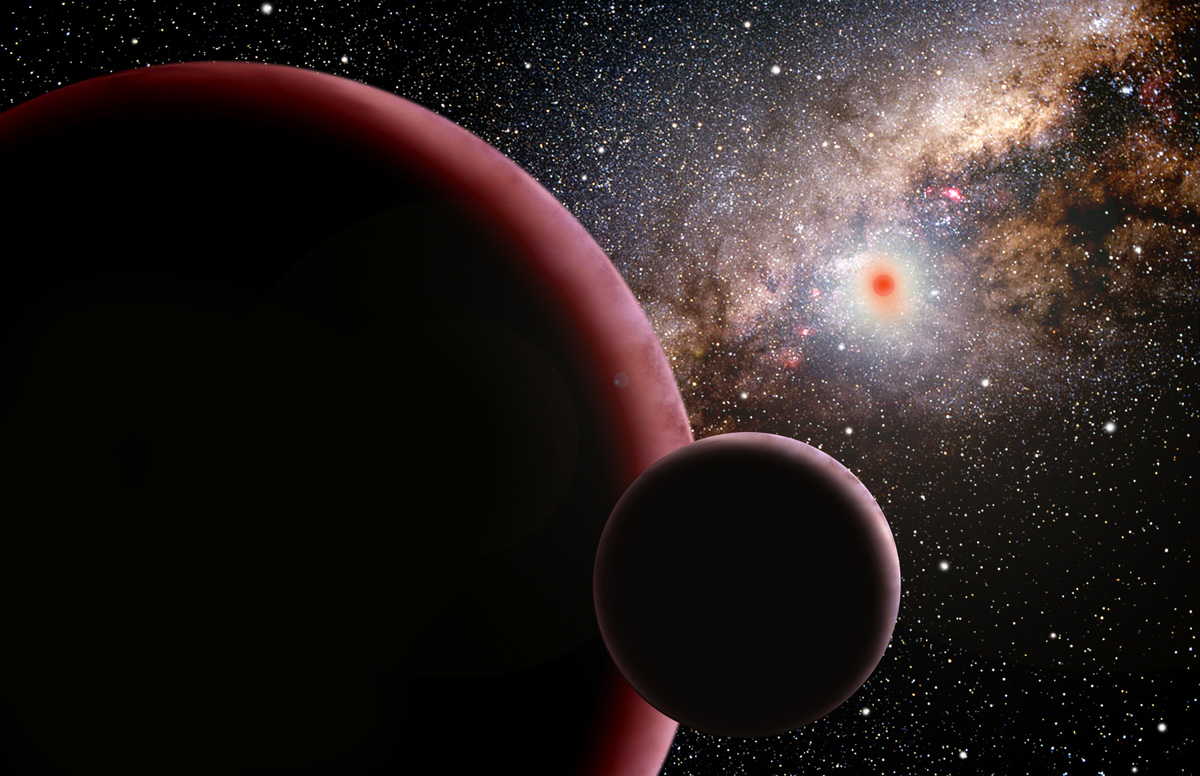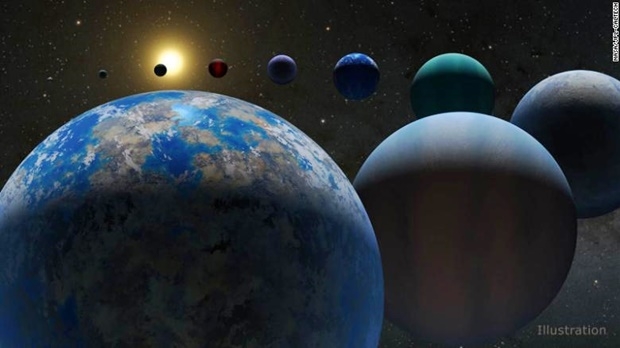出典: NASA

時々、あなたはただ知っています。 何かがカチッと音を立て、この関係が正しくないということに気づき、今はただ行くべき時です。それは誰にでも、いつでも、惑星にも、そして数十億年前にも起こり得ます。ポール·M。 サッター

今日、私たちが持っている太陽系は、私たちが今までやってきた太陽系ではありません。 今日、私たちは4つの岩石内的世界(水星、金星、地球、火星)、小惑星帯、4つのガス外的世界(木星、土星、天王星、海王星)、そして氷で覆われた輪を持っています。天文学者は、太陽系の形成をシミュレートするために数学的モデルを使用するとき、興味深いことを発見します:外惑星はかつて太陽からはるかに離れていました。 それは私たちの太陽が非常に熱いからです。その強烈な熱は氷を溶かし、太陽系内部の緩いガスを吹き飛ばします。 If you’re trying to build a giant planet, you need lots and lots of ices and gasses, like hydrogen and helium. And there just isn’t that much of the stuff near the Sun, especially in its early days when it was much more temperamental than it is today.So the giant planets need to form further out, where there’s a rich supply of materials that they can use to bulk up and get huge.Now we have an interesting problem: how do the giant planets then migrate into their current positions?One option is through a complicated dance involving the still-forming planets and the rich supplies of gas surrounding them in the young system. Through various interactions, the gas can slowly tug at the planets、 pulling them closer to the Sun over the course of a few million years.Paul M. Sutter

残りの惑星は? 太陽系外に巨大な世界を引き上げるにはかなりの量のエネルギーが必要であり、誰かはその代償を払わなければなりません。 エネルギーを失った残りの惑星は、現在地に太陽の近くに移動する必要があります。しかし、5番目の惑星はどうでしょうか? それは残りの期間、不良惑星で星間の深さを歩き回るしかないでしょう。 それは一人でしょう···しかし、少なくとも自由でしょう。

もしあなたが巨大な惑星を建設しようとするなら、水素やヘリウムなどの多くの氷やガスが必要です。 そして、特に今日よりもはるかに気まぐれだった初期には、太陽の近くには多くの物質が存在しません。そのため、巨大な惑星はより遠くに形成されなければなりません。 そこから物質が豊富に供給され、体積が大きくなり巨大になる可能性があります。今、私たちは興味深い問題を抱えています:巨大惑星はどのようにして彼らの現在地に移動するのでしょうか?1 つの方法は、まだ形成されている惑星とそれらを取り巻く豊富なガス供給を含む複雑なダンスを踊ることです。 さまざまな相互作用により、ガスは惑星をゆっくりと引き付けることができ、何百万年にもわたって惑星を太陽の近くに引き寄せることができます。 Another, much more fun, possibility involves a fifth giant planet.At first, this world would form just like its siblings, suckling on tremendous reserves of gas, plumping up to become a giant in its own right. But there isn’t enough room in the outer system for that many planets. They would tend to swing close together or have their orbits align too many times.Eventually, after a hundred thousand years or so, things would go haywire. The planet would become unstable, its orbit varying radically. Eventually, it would get ejected out of the solar system altogether.Paul M. Sutter

他に、はるかに面白い、可能性には 5 番目の巨大な惑星が含まれます。最初は、この世界は巨大なガス埋蔵量を吸い込み、それ自体で巨人になるために飛び跳ねる兄弟たちと同じように形成されるでしょう。 しかし、それほど多くの惑星のための空間が外部システムに十分ではありません。 彼らはお互いに近くでスイングしたり、軌道を並べすぎたりする傾向があります。結局、10万年ほど経つと仕事がめちゃくちゃになるでしょう。 惑星は不安定になり、軌道は急激に変化するでしょう。 結局、それはすべて太陽系の外に放出されます。 As for the remaining planets? Well, heaving a giant world out of the solar system requires a fair amount of energy, and somebody has to pay the price. The remaining planets, losing energy, would be forced to migrate closer to the Sun into their present-day positions.But what about the fifth planet? It would be forced to roam the interstellar depths as a rogue planet for the rest of the days. It would be alone···but at least it would be free。Paul M. Sutter

たまにはただ知っている時もあります。 何かパシャッとした瞬間、この関係が正しくないことに気づき、もう行かなければならない時です。それは誰にとっても、いつでも、さらには惑星においても、さらに数十億年前に起こる可能性があります。 The solar system we have today isn’t the solar system we’ve had the whole time. Today, we have four rocky inner worlds (Mercury, Venus, Earth, and Mars), an asteroid belt, four gassy outer worlds (Jupiter, Saturn, Uranus, and Neptune), and then a ring of icy leftovers.When astronomers use mathematical models to simulate the formation of our solar system, they find something interesting: the outer planets were once much, much farther away from the Sun. That’s because our Sun is so dang hot; its intense heat melts any ices and blows away any loose gasses in the inner regions of the solar system.Paul M. Sutter

どのようにして惑星が私たちの太陽系を離れたのか Pa Paul M。 サッター



